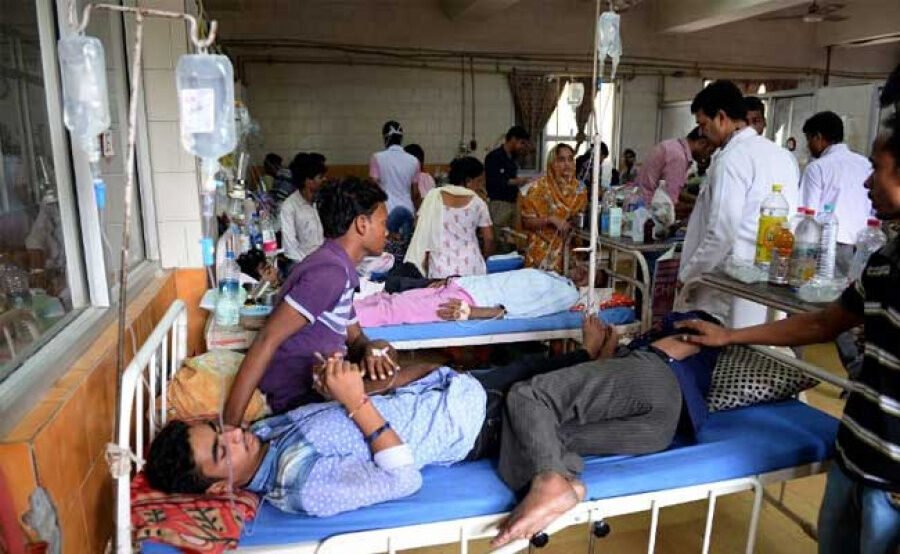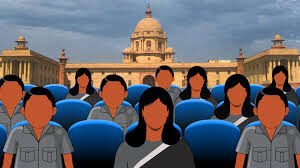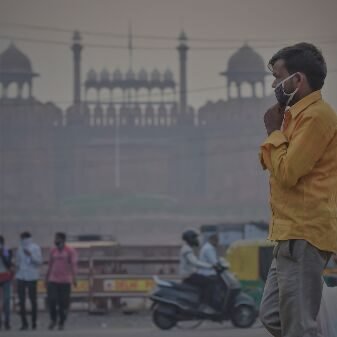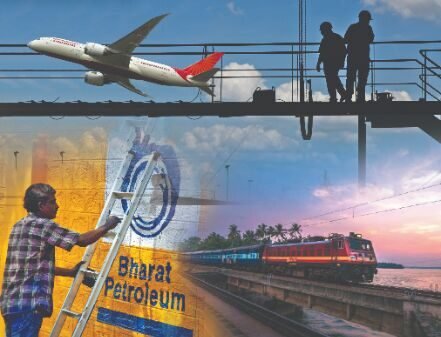Two-tier route to growth?
While the Budgetary focus on physical infrastructure for growth is a step in right direction, neglect of social infrastructure will likely propel inequality
The Union Budget for the year 2022-23 has continued with the emphasis on growth with the expectation that a high rate of growth would lead to a better quality of life for people. Nobody can dispute that growth is important but there is also the spectre of rising inequalities which cannot be overlooked. Growth has to be inclusive in nature and it is against this paradigm that the Union Budget needs to be evaluated.
We must start with the positives. There is a substantial increase of 35 per cent in the capital expenditure with ambitious targets for roads, railways and ports. This emphasis on development of physical infrastructure was very much required to lay the foundation for industrial growth and economic development. It will also create a demand for items like steel and cement, which should act as an incentive for increase in private investment and also provide jobs for those involved in the construction activities. The real test of the matter would lie in the implementation in both quality and quantity terms. Looking at the trend of expenditure against the current year’s Budget, the prospects do not look very bright but then one should not be unduly pessimistic, and hope that the government machinery will be able to fulfill the ambitious goals of capital expenditure that have been provided for in the Budget. It is also significant that despite the increase in government revenues, this expenditure will have to be met through additional borrowings which will increase the substantial interest liability in the Budget.
The second-most significant aspect in the Budget is the clear focus on digital technology. In every sector in the Budget statement, one finds schemes related to introduction of digital technology. This will definitely improve the functioning of various departments and provide better services to the people. We have the concept of drones in agriculture to improve crop statistics as well as land records. In the education sector, E-Vidya is being used to develop about 200 channels to provide quality education to the school-going children. Similarly, in the health sector, digital healthcare has been given paramount importance. This is the age of technology and only that country will go forward which develops a knowledge economy. The importance given to digital technology is a step in the right direction and prepares India to face the disruptive challenges posed by the fast-changing technological environment. This should also lead to a creation of a new set of job opportunities for the youth.
My main concerns around the Budget are regarding the sectors of health and education that haven’t seen any increase in budgetary allocation. Besides, apart from introducing digital technology there is no new scheme to bring about qualitative improvement in education and healthcare. The development of social infrastructure is as important as the physical one. We have examples of various countries which first focused on education and healthcare to develop their human capital and then emphasised on physical infrastructure. Only a well-educated and healthy society can take full advantage of the opportunities created by enhancement of capital expenditure. Health and education should be the topmost priorities of the nation and this should have been reflected in the Budget. For instance, having a digital health card and digital infrastructure is undoubtedly useful but digital intervention without a sound physical foundation is not likely to yield the required outcomes. Healthcare will improve only if there are more doctors, nurses, paramedics, ICU beds, hospitals and other health-related infrastructure. This requires significantly stepping up the expenditure in public health, which is still languishing at only about 1.3 per cent of GDP whereas it should be stepped up to 2.5 per cent at the earliest. The pandemic has exposed the huge gaps in our healthcare system, particularly in the rural areas. This should have sensitized the government to accord highest priority to the health sector.
Similarly, the pandemic has created huge issues in the education sector, which should have been reflected in the Budget. E-Vidya is a welcome move but it is no substitute for improving the education infrastructure, quality of teaching and learning outcomes. I am also mystified by the reduction of allocation for the crucial MGNREGA scheme. People are still suffering from the adverse impacts of the pandemic which has pushed millions into poverty, who require the safety net of a rural employment guarantee scheme like MGNREGA. Also, I was looking forward to the introduction of an urban employment guarantee act along the same lines as MGNREGA to cater to the unemployment problem in urban areas. This could have helped in creating productive assets and more consumer demand. In fact, the Budget has not taken any significant step towards enhancing consumer demand which contributes more than 50 per cent to the GDP and acts as a stimulus to private investment.
Previous year’s Budget talked big on disinvestment and privatisation but current year’s Budget is silent on these goals. For the current year, against the target of Rs 1.75 lakh crore only about Rs 9,000 crore has been realised. Expectations are that with the LIC IPO, it would reach Rs 78,000 crore. The roadmap for the future is not clear. It may be that not being able to push through the structural reforms in agriculture, the government has become a little cautious. Furthermore, the government had announced monetisation of Rs 6 lakh crore of public assets and there were talks of realising Rs 88,000 crore this year itself. Once again, the Budget has not spelt out any details regarding this.
The middle class, particularly the salaried section, was eagerly looking forward to some benefits in income tax but the Budget has not touched the income tax rate at all. A reduction could have once again stimulated consumer demand by putting more disposable income in the hands of the people. However, it is noteworthy that the tax rates have been kept constant which is a positive point in itself.
We can hail the budget as being a growth-oriented one, and also appreciate the stress on digital technology. However, in a society where inequalities have gone up over the last few years, more thought could have been given to the inclusiveness and development of human capital.










